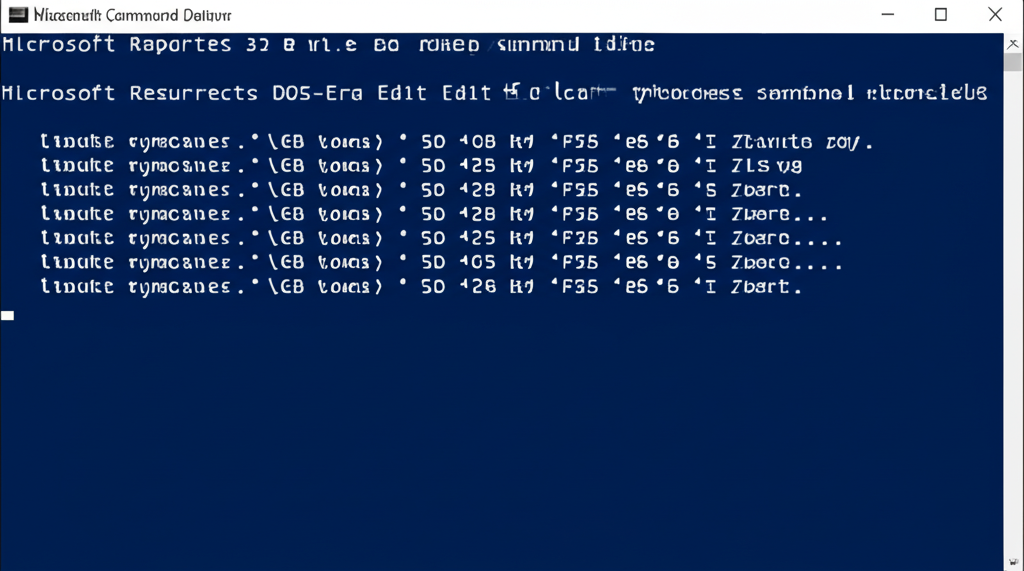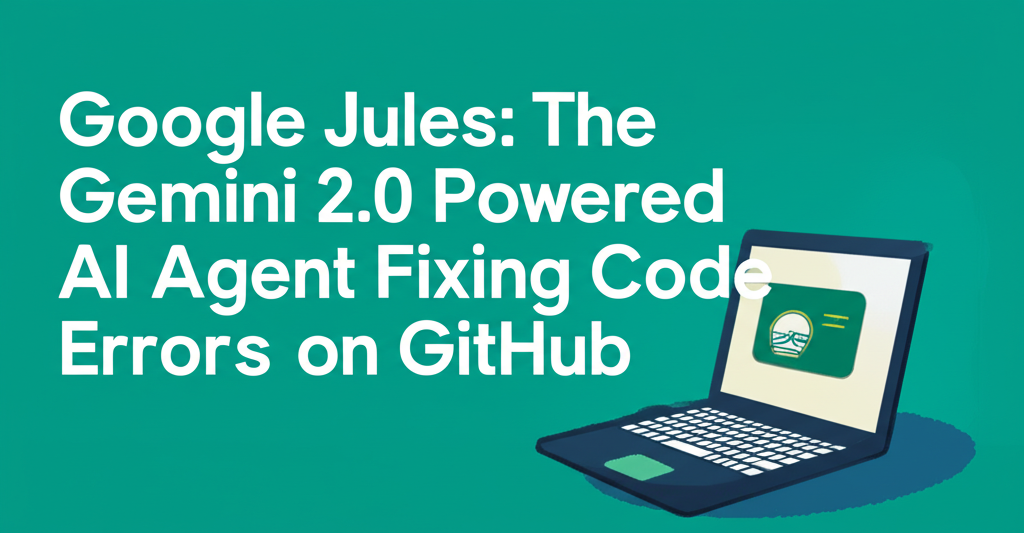Nvidia's RTX PRO Server: Bridging the Gap Between Traditional Enterprise IT and Agentic AI
The landscape of enterprise computing is undergoing a profound transformation, driven by the relentless rise of artificial intelligence. While AI has demonstrated immense potential, its integration into existing IT infrastructure has often presented a challenge. Traditional datacenters, built primarily for general-purpose x86 workloads, are not inherently optimized for the parallel processing demands of modern AI. Recognizing this dichotomy, Nvidia, a dominant force in the AI hardware space, has introduced a new server design aimed squarely at bridging this gap: the RTX PRO.
Unveiled at the GPU Technology Conference (GTC) running concurrently with Computex in Taiwan, the RTX PRO server design represents Nvidia's strategic move to embed its powerful GPU technology more deeply within mainstream enterprise datacenters. This is not just another AI supercomputer; it's a system designed for duality, capable of comfortably hosting conventional x86-based applications alongside the burgeoning wave of agentic AI workloads.
A Hybrid Approach for the AI Age
Nvidia CEO Jensen Huang, speaking at the GTC keynote, reiterated a familiar theme: the limitations of general-purpose enterprise IT when confronted with the demands of AI. However, he also acknowledged a crucial reality – organizations have significant investments in existing infrastructure and cannot simply abandon their established workloads. ERP systems, desktop virtualization, databases, and countless other critical business functions still rely heavily on x86 architecture and traditional datacenter management tools.
The RTX PRO server is Nvidia's answer to this challenge. By incorporating x86 processors alongside its GPUs, the design allows enterprises to consolidate their computing needs onto a single platform. This hybrid approach promises efficiency and flexibility, enabling IT departments to deploy and manage both traditional and AI-native applications without requiring entirely separate infrastructure silos.
Crucially, Nvidia emphasizes that the RTX PRO is designed to integrate seamlessly into existing enterprise IT environments. It is built to be compatible with widely used management platforms and hypervisors from vendors such as Broadcom (VMware), Nutanix, and Red Hat. This focus on compatibility aims to lower the barrier to AI adoption for businesses, allowing them to leverage their existing operational expertise and tools rather than requiring a complete overhaul of their IT management strategies.
Powering the Next Wave: RTX PRO 6000 and Agentic AI
At the heart of the RTX PRO server design are eight of the new NVIDIA RTX PRO 6000 Blackwell Server Edition GPUs. These are formidable processors, packing significant computational power tailored for professional visualization, simulation, and increasingly, AI tasks. Each GPU boasts:
- 24,064 CUDA cores for general-purpose parallel processing.
- 752 Nvidia fifth-gen Tensor cores, specifically designed to accelerate AI and machine learning workloads.
- 188 fourth-gen RT cores for real-time ray tracing and rendering.
- A stated performance of 120 TFLOPS at single-precision FP32.
The inclusion of eight such powerful GPUs in a single server unit underscores the design's focus on demanding AI applications. However, raw processing power is only part of the equation. Efficient communication between GPUs is paramount for many AI tasks, particularly large-scale model training and inference.
Jensen Huang highlighted the presence of an internal switch dedicated to facilitating GPU-to-GPU communication. While specific details of the switch technology were not fully disclosed, the mention of 800 Gbps connections linking the GPUs points to a high-bandwidth, low-latency interconnect designed to ensure that the eight GPUs can work together cohesively and efficiently. This is a critical feature for workloads that require frequent data exchange between processors, preventing bottlenecks that could otherwise limit the system's overall performance.
Beyond the hardware, the RTX PRO server is designed to work in concert with Nvidia's AI data platform. This platform is engineered to efficiently pump data from external storage systems into the GPUs, a vital capability for data-intensive AI training and inference tasks. By integrating compute, storage access, and high-speed networking within a single, optimized design, Nvidia aims to provide a reformed infrastructure stack specifically tuned for the demands of the AI era, while still accommodating traditional workloads.
The Rise of Agentic AI and the Need for Management
A significant focus of Huang's presentation and the RTX PRO's positioning is the emerging field of agentic AI. Unlike traditional AI models that perform specific tasks based on explicit prompts, agentic AI systems are designed to operate more autonomously. They can break down complex goals into smaller steps, interact with their environment (including other software systems and data sources), and learn and adapt over time to achieve their objectives. These agents are envisioned as potentially transforming workflows across industries, acting as intelligent assistants, automated researchers, or proactive system managers.
Huang expressed immense enthusiasm for agentic AI, noting that Nvidia's own software engineers are already utilizing them. However, he also acknowledged the potential complexities and challenges that arise with the proliferation of such autonomous entities. Managing a fleet of AI agents – ensuring they operate correctly, securely, and efficiently, and preventing unintended consequences – will become increasingly important as they become more widespread.
In a notable analogy, Huang stated that Nvidia's tools and platforms for managing these agents would become the equivalent of an "HR department for AI agents." This suggests a future where enterprises will need sophisticated systems not just to deploy and run AI models, but to orchestrate, monitor, and govern the behavior of multiple interacting AI agents. The RTX PRO server, designed to host these agents, is positioned as a foundational element of this future management infrastructure.
Broader Strategic Context: Blackwell, Desktops, and Robotics
The RTX PRO announcement sits within Nvidia's broader strategic push across multiple fronts of the AI revolution. Huang also provided updates on other key areas:
-
Blackwell 300 Series Accelerators: Beyond the RTX PRO 6000, the higher-end Blackwell 300 series accelerators, targeting both desktops and datacenters, are slated for debut in Q3. This indicates Nvidia's continued rapid innovation cycle for its core AI silicon. The prospect of 20-petaFLOPS desktops, as previously hinted, is moving closer to reality, potentially bringing significant AI processing power to individual workstations.

Nvidia's Blackwell architecture is set to power the next generation of AI systems. Image credit: Wired - Desktop AI PCs: Huang showcased one of Nvidia's own DGX mini-AI-PCs, reinforcing the company's belief in the importance of powerful AI capabilities extending beyond the datacenter to the desktop. These systems could enable developers and researchers to work with larger models and more complex AI tasks locally.
-
Robotics and Humanoids: Robotics remains a significant area of interest for Nvidia. Huang offered insights into why widespread robotics adoption hasn't materialized as quickly as some predicted. He argued that current robots are often built for highly specific, niche uses, limiting their market size and preventing manufacturers from achieving the economies of scale necessary to lower costs significantly. Huang believes that humanoid robots could change this dynamic. Because they are designed to operate in environments built for humans, they require a common set of capabilities – perception, manipulation, navigation, interaction – that are transferable across various applications, from factories to homes. Nvidia is actively working to accelerate the development of humanoid bots, viewing it as a multi-trillion-dollar market opportunity where its simulation platforms (like Omniverse) and AI technologies can play a crucial role. Project GR00T, a foundation model for humanoid robots, is a key part of this effort.

Nvidia's Project GR00T aims to give humanoid robots the ability to understand natural language and mimic human movements. Image credit: TechCrunch
Implications for the Enterprise Datacenter
The introduction of the RTX PRO server design signals Nvidia's intent to move beyond being solely a provider of specialized AI infrastructure for large-scale training clusters. By creating a system that accommodates both traditional x86 workloads and advanced AI, Nvidia is directly addressing the practical needs of mainstream enterprises. This hybrid approach could significantly simplify the deployment and management of AI applications within existing IT frameworks.
For IT managers, the promise is the ability to leverage familiar tools and processes (Kubernetes, existing hypervisors) while gaining access to powerful, integrated AI acceleration. This could reduce the operational complexity and cost associated with deploying AI, which often requires specialized skills and separate hardware stacks.
The focus on agentic AI is particularly forward-looking. As businesses increasingly look to automate complex tasks and create more intelligent, autonomous systems, the infrastructure capable of reliably hosting and managing these agents will become essential. Nvidia's positioning of its tools as an "HR department" for agents suggests a future where AI governance and orchestration are as critical as compute power.
The availability of these servers, expected to begin shipping through partners in July, marks a concrete step towards making advanced AI capabilities more accessible and manageable within the corporate datacenter. It represents Nvidia's strategy to become an indispensable part of the core enterprise IT stack, not just a provider of specialized accelerators.
Technical Deep Dive: The RTX PRO 6000 Blackwell Server Edition
Let's take a closer look at the specifications of the NVIDIA RTX PRO 6000 Blackwell Server Edition GPU mentioned in the announcement. While the name suggests a link to the professional visualization line (RTX), the "Blackwell Server Edition" suffix and the stated specifications clearly position it as a powerful accelerator for datacenter AI and compute workloads, leveraging the latest Blackwell architecture.
- CUDA Cores (24,064): These are the backbone of Nvidia's parallel processing architecture, used for a wide range of tasks from graphics rendering to scientific simulations and general-purpose computing (GPGPU). The high core count indicates significant raw processing capability.
- Fifth-Gen Tensor Cores (752): Tensor cores are specialized units designed to dramatically accelerate matrix multiplication operations, which are fundamental to deep learning and AI training/inference. The fifth generation likely brings further improvements in performance, efficiency, and support for various data types (like FP8, FP16, BF16, TF32, FP64).
- Fourth-Gen RT Cores (188): While primarily associated with real-time ray tracing for graphics, RT cores can also be leveraged for certain simulation tasks and potentially future AI applications that involve spatial reasoning or physically accurate rendering.
- FP32 Performance (120 TFLOPS): TFLOPS (Tera Floating-point Operations Per Second) is a measure of computational speed. 120 TFLOPS in single-precision (FP32) is a substantial figure, indicating strong performance for traditional scientific computing and certain AI workloads that require higher precision than typical training (which often uses lower precision like FP16 or BF16). This also highlights the versatility of the GPU beyond just deep learning.
The combination of a high number of CUDA, Tensor, and RT cores, coupled with significant FP32 performance, makes the RTX PRO 6000 Blackwell Server Edition a versatile accelerator. It's capable of handling not only the core matrix math of AI but also related tasks like data preprocessing, simulation, and potentially even professional visualization workloads within the datacenter context.
The mention of an internal switch connecting the eight GPUs at 800 Gbps is particularly noteworthy. This high-speed interconnect is likely a form of NVLink or a similar proprietary technology optimized for GPU-to-GPU communication within a server node. Traditional server architectures often rely on PCIe for GPU connectivity, which can become a bottleneck when multiple GPUs need to exchange large amounts of data frequently. A dedicated, high-bandwidth switch ensures that the GPUs can cooperate efficiently on large models or parallel tasks, maximizing the performance of the multi-GPU system.
The Competitive Landscape and Nvidia's Position
Nvidia's move to integrate AI acceleration more tightly with traditional x86 server infrastructure comes at a time when the competitive landscape for AI hardware is intensifying. While Nvidia currently holds a dominant position, other players are actively developing alternatives.
Companies like AMD are pushing their own accelerators, such as the Instinct series, and working to build out their software ecosystems to challenge Nvidia's CUDA dominance. AMD's MI325X GPU and subsequent roadmap announcements are clear indicators of this competition. Cloud providers and large enterprises are also exploring custom silicon solutions.
However, Nvidia's strength lies not only in its hardware but also in its comprehensive software stack (CUDA, libraries, frameworks) and its deep relationships within the AI ecosystem. The RTX PRO server design leverages these strengths by offering a familiar, manageable platform that integrates with existing enterprise tools while providing access to Nvidia's powerful AI capabilities.
By explicitly supporting standard hypervisors and management tools, Nvidia is making a pragmatic concession to the realities of the enterprise datacenter. Instead of forcing customers onto entirely new platforms, they are meeting them where they are, offering a path to integrate AI into their existing operations. This strategy could help Nvidia maintain its lead by making its technology more accessible to a broader range of enterprise customers who may not have the resources or expertise to deploy highly specialized AI clusters.
Agentic AI: The Future Workforce?
The emphasis on agentic AI in Huang's keynote is a strong signal about where Nvidia sees a significant future opportunity. While current AI applications often involve training large models or performing specific inference tasks (like image recognition or natural language processing), agentic AI represents a shift towards more dynamic, goal-oriented systems.
Imagine AI agents capable of:
- Monitoring complex IT systems, identifying potential issues, and autonomously taking corrective actions.
- Acting as personalized research assistants, sifting through vast amounts of data, synthesizing information, and presenting findings.
- Automating complex business processes that involve interacting with multiple software applications.
- Assisting in design and engineering by autonomously exploring design variations based on high-level criteria.
The potential applications are vast, but so are the challenges. Ensuring agents are reliable, secure, and aligned with human intent requires sophisticated infrastructure and management tools. Nvidia's vision of an "HR department for agents" suggests a platform that could provide:
- Orchestration: Managing the lifecycle of agents, deploying them, and coordinating their interactions.
- Monitoring: Tracking agent performance, resource usage, and behavior.
- Security: Ensuring agents operate within defined boundaries and protecting against malicious use.
- Governance: Setting policies, auditing agent actions, and ensuring compliance.
- Collaboration: Enabling agents to work together or with human users effectively.
The RTX PRO server, with its combination of x86 processing for traditional tasks and powerful GPUs for AI, is well-suited to host such agentic workloads. The x86 side could potentially run the control plane or interface layers, while the GPUs handle the computationally intensive AI model execution that powers the agents' decision-making and actions.
Robotics: From Niche Tools to Humanoid Companions
Huang's commentary on robotics highlights another area where Nvidia is investing heavily and sees long-term potential. His analysis – that the lack of commonality between specialized robots hinders mass production and lowers costs – is insightful. A robot designed solely for welding in a car factory shares little in common with a robot designed for picking fruit in a field or assisting the elderly in a home.
Humanoid robots, by contrast, are being developed to operate in environments designed for humans. This necessitates a common set of physical and cognitive capabilities:
- Bipedal locomotion and balance.
- Dexterous manipulation (hands).
- Visual and auditory perception of the human world.
- Understanding and generating natural language.
- Reasoning about physical space and objects.
Developing these core capabilities creates a foundation that can be adapted for a wide range of tasks simply by changing the software or adding specific end-effectors (tools). This potential for commonality across different applications could finally enable the economies of scale needed to make robots more affordable and widespread.
Nvidia's role in this future is multifaceted. Its GPUs are essential for processing the massive amounts of sensor data robots collect and running the complex AI models that enable perception, navigation, and decision-making. Its simulation platforms, like Omniverse, provide virtual environments where robots can be trained and tested safely and efficiently before being deployed in the real world. And initiatives like Project GR00T are focused on developing the foundational AI models that will give humanoids the intelligence and capabilities needed to interact effectively with humans and their environments.
While the RTX PRO server is primarily focused on datacenter workloads, the underlying technologies – powerful GPUs, efficient interconnects, and advanced AI software – are the same building blocks that power Nvidia's robotics efforts. The company's strategy is clearly to provide the foundational compute and AI platform for a future where intelligent machines, whether in the datacenter or the physical world, become increasingly prevalent.
Conclusion: A Pragmatic Step Towards Ubiquitous AI
Nvidia's RTX PRO server design is a pragmatic and significant step in the evolution of enterprise AI infrastructure. By combining the familiarity and compatibility of x86 architecture with the raw power of its latest Blackwell-based GPUs, Nvidia is offering enterprises a clear path to integrate demanding AI workloads, including the emerging category of agentic AI, into their existing datacenters without wholesale disruption.
The focus on compatibility with standard enterprise tools, the powerful RTX PRO 6000 GPUs with their high-speed interconnect, and the forward-looking vision for managing AI agents position the RTX PRO as a key piece of infrastructure for businesses looking to harness the full potential of AI. Coupled with Nvidia's broader efforts in areas like desktop AI and humanoid robotics, the announcement at Computex/GTC reinforces the company's ambition to be the foundational technology provider for the entire spectrum of AI applications, from the cloud and datacenter to the edge and the physical world.
As enterprises navigate the complexities of the AI era, solutions like the RTX PRO server that bridge the gap between the old and the new, while providing powerful, manageable, and versatile capabilities, are likely to play a crucial role in accelerating the adoption and impact of artificial intelligence across industries.
The availability of these servers starting in July will be a key milestone, allowing enterprises to begin deploying this hybrid infrastructure and explore the possibilities of running agentic AI alongside their mission-critical traditional workloads.
The journey towards ubiquitous AI in the enterprise datacenter is ongoing, and with the RTX PRO, Nvidia is providing a compelling new option for businesses ready to take the next step.
Further reading on related topics:
- Key takeaways from a previous Nvidia GTC event (TechCrunch)
- Understanding Agentic AI (Wired)
- The booming enterprise AI market (VentureBeat)
- AI and Robotics trends from CES (TechCrunch)



















